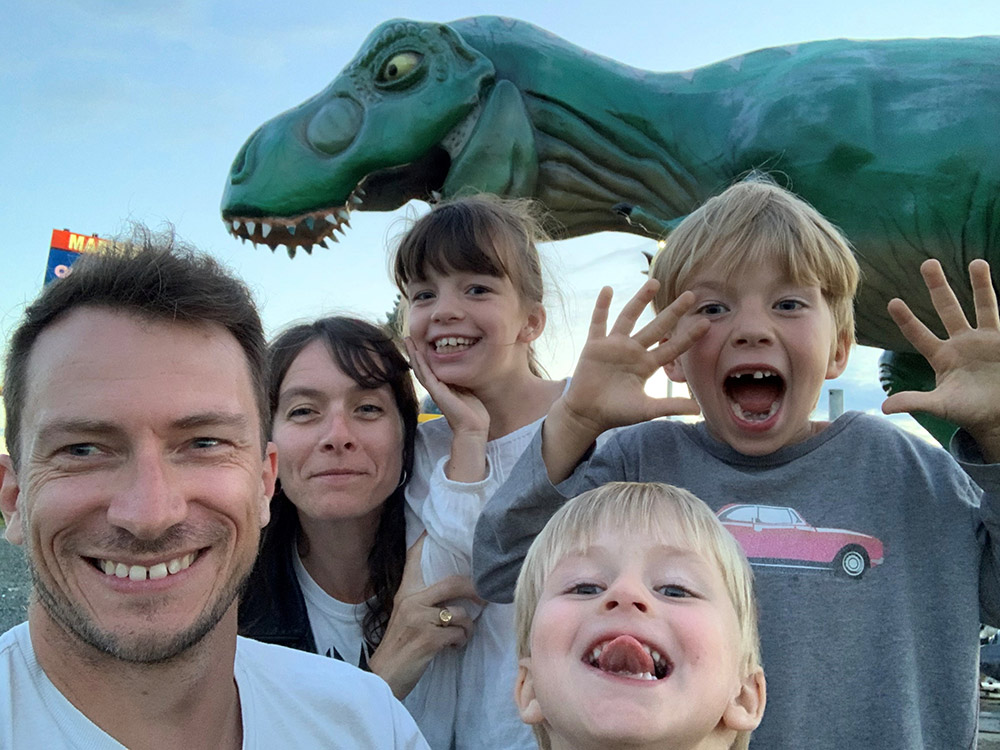My children — 12-year-old Lou, 10-year-old Paul and 7-year-old Jules — are my life. Lou and Jules were born with an extremely rare genetic disorder known as DADA2 (deficiency of adenosine deaminase 2). The odds of them both having it are astronomically slim: there are only 650 cases in the world.
Paul may have been luckier in the genetic lottery, but he has made sacrifices too, and they have taken their toll. My heart aches when I think that he couldn’t see either one of his siblings for over three months after their bone marrow transplants. There was too much of a risk of him passing along something infectious.
What our family has gone through has kept us apart from other people and turned our lives upside down.
We were extremely fortunate to have been able to count on the multidisciplinary teams at Sainte-Justine for support. They put their expertise to work to identify the cause and to ensure Lou and Jules were treated with care and compassion every step of the way.
It all started when Lou, then three years old, had a stroke while she was at daycare. She was sent to Sainte-Justine for an MRI. The results showed a brain injury, but the exact cause remained unknown. Luckily, there were no longer-term effects.
But in the years that followed, she started exhibiting all sorts of odd symptoms: she would lose clumps of hair, she had pains in her legs, and her skin would break out into patches of eczema. She developed Raynaud syndrome, which made her sensitive to cold. We were all very worried, but none of the specialists we consulted could figure out what was going on.
Then it was Jules’s turn. He was three when we rushed him into the Sainte-Justine emergency room. He had stopped playing and was growing more and more lethargic. When the doctors got his bloodwork back, it was all hands on deck. His red cell count was dangerously low. He needed a transfusion and he needed it right away. The hunt was on to find the cause for the extreme anemia, but his case remained as mysterious as his sister’s.
It was clear that my two children were experiencing something out of the ordinary, but the teams couldn’t connect the dots in any way that made sense. When it was discovered, somewhat by chance, that Lou was also suffering from anemia, they redoubled their efforts. But still no leads.
Then one day, we were called in to see Dr. Labrosse, an immunologist at Sainte-Justine. She told us about an extremely rare genetic disorder that had just been discovered and said it might very well be to blame for everything Lou and Jules were going through. The name of the disorder was deficiency of adenosine deaminase 2, or DADA2 for short.
They had every symptom on the checklist: high risk for stroke, compromised immune system, inflammatory response, severe anemia and aplasia. Finally, we had a diagnosis! What would follow were several months of testing and back-and-forth between the specialists at Sainte-Justine and experts from around the world who had direct experience with the disease. Together, they mapped out the best way forward.
Lou and Jules became the first children at Sainte-Justine to be diagnosed with DADA2, which had been discovered only in 2014. There were a mere 650 documented cases in the world. It blew me away to know that these world-class scientists were toiling away trying to identify what the disorder was while my children were actually battling the symptoms.
I am so grateful to Sainte-Justine. Without the incredible work of all the teams, including medical experts such as Roxane Labrosse, Michel Duval, Henrique Bittencourt, Pierre Teira and Fabien Touzot, my family would not have the answers we do today.
At Sainte-Justine, donations are important in bringing research from bench to bedside. Rare disorders help advance our understanding of certain key mechanisms in medicine. When we find a treatment, it can also benefit patients with other conditions that have similar internal processes.
Lou and Jules each underwent a bone marrow transplant in the fall to get stronger. So far, it’s the only approach that offers them any hope of a treatment.
After 55 days in the hospital, we made our way back home in mid-July. A close eye will be kept on them for 18 months. They’ve been prescribed a mind-boggling array of anti-rejection drugs, and the list of precautions is a long one. Getting back to normal will take some time.
Meanwhile, we continue to look to the Sainte-Justine Tree of Lights, which stands as a symbol of hope for my three children.
For Paul, the lights let him dream of the day when his brother and sister will be able to play with him again and he can get his childhood back. For Jules and Lou, they point to medical discoveries and a brighter future ahead.
On behalf of them and our entire family, I thank you for doing your part to uphold Sainte-Justine’s tradition of excellence by making the Tree of Lights glow from top to bottom.
Emily, proud mother of Lou, Paul and Jules

*The remarks expressed in this article reflect the opinion solely of the author and should not be considered as representative of the CHU Sainte-Justine Foundation.





















